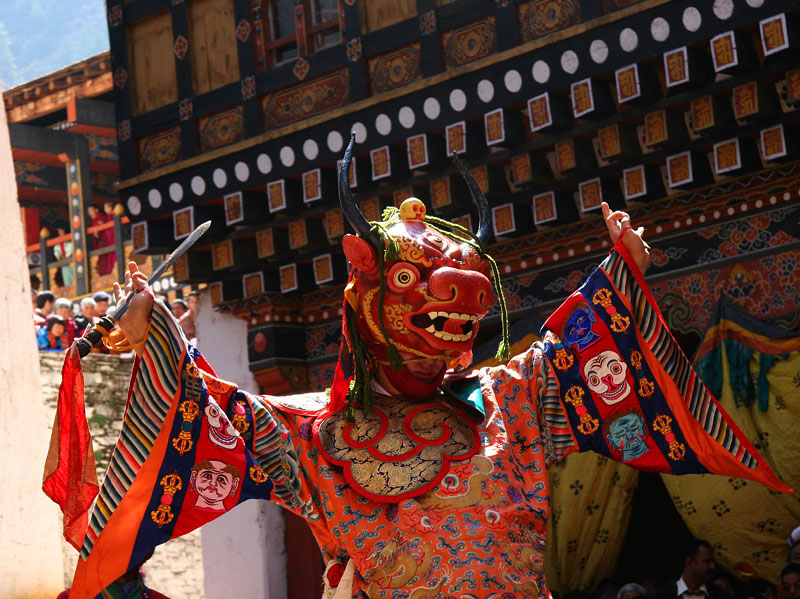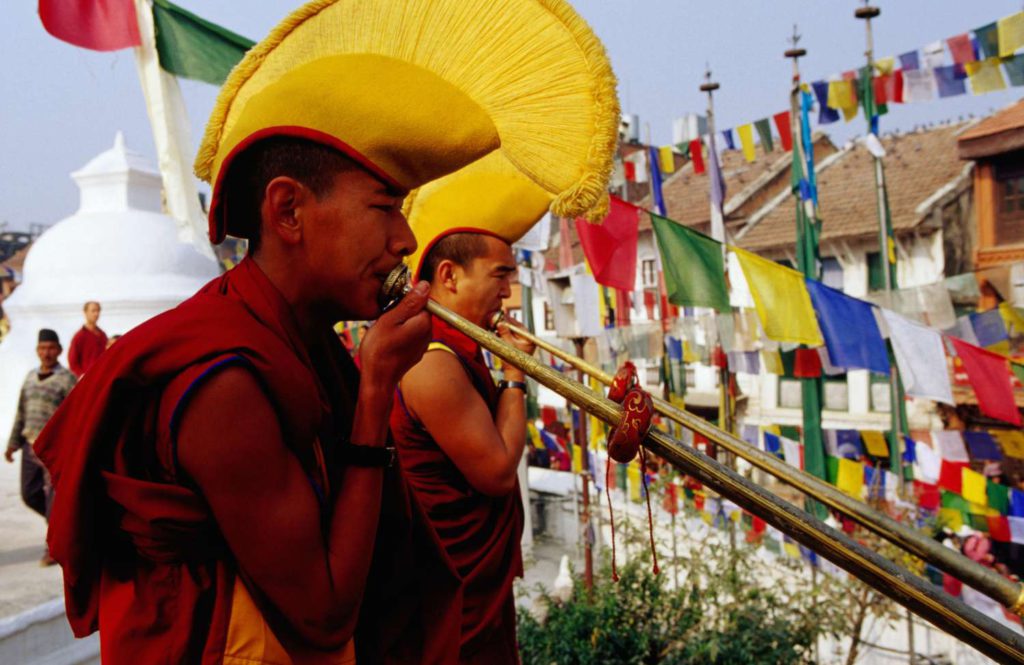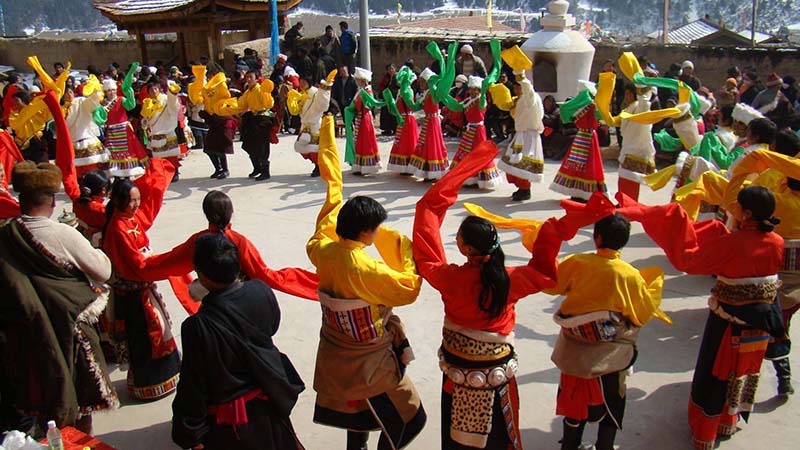The Tibetan New Year event, Losar, is known for its grotesque masks, vibrant costumes, prayer flags that wave in the wind, multicoloured butter sculptures, and countless butter lights that light up the night. Over the course of a few weeks, the people of Tibet (as well as a few from Nepal, Bhutan, and India) participate in historic rituals that pay homage to the gods and send love and blessings to those who are important to them for the upcoming year.
The Tibetan New Year: How it all began?

Tibetans around the world (as well as some residents of Nepal, Bhutan, and India) celebrate Losar, a 15-day New Year festival. The festival’s main events take place over the first three days, after which there are casual get-togethers with family and friends and the festival’s final episode, the Butter Lamp Festival, on the fifteenth day.
Before Buddhism arrived in the nation, Losar was first a winter incense-burning ceremony of the local Bon religion. The celebration was shifted to roughly correspond with Chinese New Year after Buddhism was introduced to Tibet as a way to celebrate the New Year.
The date of Tibetan New Year is determined by the Tibetan lunisolar calendar, and it always falls on a new moon in the first two solar terms, from February 5 to March 5. Tibetan New Year occurs on February 21st in 2023. However, the precise date differs from that of the Chinese solar calendar.

The Losar Traditions:
- Prior to the Tibetan New Year, some spring cleaning is mandatory.
People start making preparations for the Tibetan New Year during the final two days of the previous year. Before the New Year, Tibetans thoroughly clean their homes to represent sweeping away the ill luck from the previous year and preparing their dwellings for good luck. Since the kitchen is the most essential room in the house and where food is made, it needs to be cleaned in particular.
- Celebrating Tibetan New Year’s Eve with a reunion dinner
Similar to the Han (the majority Chinese ethnicity) Chinese New Year feast, Tibetan families dress up on New Year’s Eve and share a banquet to celebrate the start of the New Year. Large families with multiple generations eat together at round tables and enjoy their time together.
- Decimating ghosts
Tibetans hold a brief ceremony to ward off evil spirits on New Year’s Eve following the family feast. People walk through the house brandishing torches during the ritual while yelling “get out.” Its purpose is to expel bad luck from their homes.
- Getting the First Bucket of Water for the New Year
The women will typically rise quite early on January 1st to gather the first bucket of water for the year from a nearby river. The first pail of water drawn from the river or well is thought to bring good fortune for the upcoming year.
- Prayer Flags
The third day of the Tibetan New Year is typically when Tibetans place prayer flags to pray for a good harvest, good fortune, and prosperity in the next year. On that day, the entire family gets dressed up and congregates on the roof of their home to take part in the joyful activities. Many different coloured triangular flags are linked together on a rope to form praying flags. Blue, white, red, green, and then yellow are the orderly colours of the flags. The colours blue for the sky, white for clouds, red for fire, green for water, and yellow for soil each represent a different element found in nature. The Tibetan people honour these five natural elements, which are thought to be the material foundation of their lives, by hanging prayer flags.
- Wei Sang
Wei Sang, or the burning of pine tree branches, is one of the most significant rituals associated with the Tibetan New Year. It can happen at home or in nearby monasteries. In both monasteries and villagers’ homes, stoves are utilised to burn pine tree branches.
People sing Buddhist verses while lighting the fires with cypress branches and barley powder. The committed Tibetans, who think that by performing this act, they will get a blessing from the Buddhas and Bodhisattvas, find solace and peace in the smoke from the burning fire.
On the night of the festival’s last day, lamps made of clarified yak butter are lit alongside the sculptures. This night of the New Year’s festivities, will always have a full moon shining!
Usually during such festivities of New Year, Tibet is closed to foreign tourists. But another festival called the Shoton Festival is also worth seeing in Tibet.







